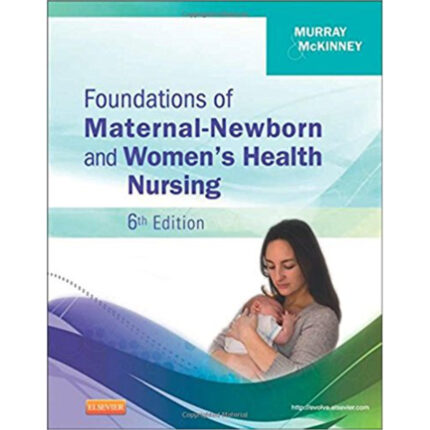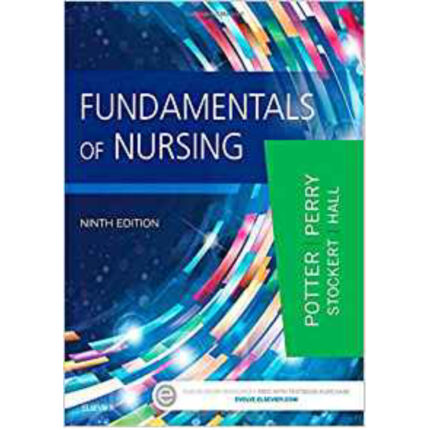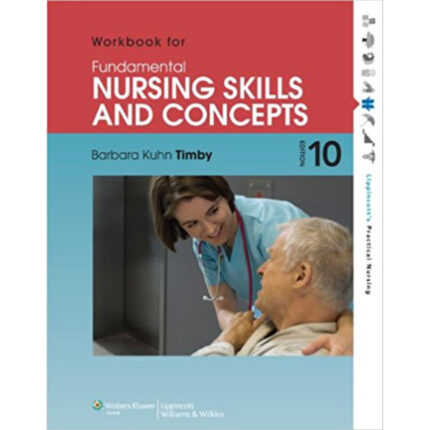Psychiatric Mental Health Nursing From Suffering to Hope 2nd Edition – Test Bank
MGATIES FOTTER
Psychiatric-Mental Health Nursing 2E
MOM SUFFERING TO HOPE
Psychiatric-Mental Health Nursing, 2e (Potter/Moller)
Chapter 1 Framework of Psychiatric-Mental Health Nursing
TEST BANK
1) A staff member who is unlicensed assistive personnel (UAP) is overheard saying that a patient with a mental illness is not really “sick.” Which response should the nurse make to the UAP?
1. “Patients with mental illness believe they are ill.”
2. “A mental illness disrupts thinking and daily functioning.”
3. “Mental illnesses are more debilitating than physical illnesses.”
4. “Since so few people have mental illnesses, it really does not matter.”
Answer: 2
Explanation: 2. A mental illness is a medical condition that disrupts a person’s thinking, feeling, mood, ability to relate to others, and daily functioning. The response that patients with mental illness believe they are ill is not accurate or therapeutic. Mental illnesses are not always more debilitating than physical illnesses. Many individuals are affected by mental illness.
Page Ref: 3
Cognitive Level: Applying
Client Need/Sub: Psychosocial Integrity
Standards: QSEN Competencies: I.C.1. Value seeing health care situations “through patients’ eyes.” | AACN Essential Competencies: VI.2. Use inter-and intraprofessional communication and collaborative skills to deliver evidence-based, patient-centered care | NLN Competencies: Context and Environment: Ethical Comportment: Examine personal beliefs, values, and biases with regard to respect for persons, human dignity, equality, and justice; explore ideas of nurse caring and compassion | Nursing/Integrated Concepts: Nursing Process: Implementation Learning Outcome: 1. Discuss the epidemiology of psychiatric and mental health disorders.
MNL LO: 1. Recognize the epidemiology and classification of psychiatric-mental health disorders.
2) A staff sane states that adolescents are too young to develop a mental illness. Which information should the mire manager include in response?
1. More than 12 milion adolescents were treated for a mental illness in 2006.
2. Adolescents are not usually diagnosed with a mental illness they are older
3. Mental illness in adolesorts is really an undiagnosed physical illness
4. Mental illness develops in adolesorts who live in toxic euro
Answer: 1
Explanation: 1. In 2016. 12.5 milion or 50% of the total population with metal illnesses are adolescents ages 12 to 17. Adolescents can be diagnosed with a mental illness at any age. Mental illness in adolescents is not really an undiagnosed physical illness. Mental illness can develop in
any type of envir Page Ref: 4
Cognitive Level: Understanding
Client Need Sub: Prychosocial Integrity
Standards QSEN Competencies: LA1. Integrate understanding of ultiple dimensions of
patient-centered care | AACNEssential Competencies: 1.3. Use skills of inquiry, analysis, and information literacy to address practice isses | NLN Competencies: Context and Environment Practice-Know-How: apply bealth promotion disease prevention strategies | Nursing Integrated
Concepts: Nuning Process Implementation
Learning Outcome: 1. Discuss the epidemiology of pychiatric and mental health disorders
MNL LO: 1. Recognize the epidemiology and classification of psychiatric-mental health
disorders
5) The mase is preparing a presentation on serious mental illness. Which health problem shοτάδ be inchoded? (Select all that apply)
1. Major depressive disorder
2. Schizophornia
3. Adjustment reaction
4. Bipolar disorder
5. Social phobia
1,2,4
Explanation: 1. Serious mental illnesses create significant disability in the individual’s ability to achieve life goals. Serious mental illnesses include major depressive disorder, schizophrenia, and bipolar disorder
2. Serious mental ilhesses create significant disability in the individual’s ability to achieve life goals. Serious mental illnesses inchade major depressive disorders, schizophrenia, and bipolar
3. Although they can have distbeving and disabling effects, adjustmentoractions do not necessarily interfere with the achievement of life goals
4. Serious mental illnesses create sigurican disability the’s ability to achieve le goods. Serious mental illnesses inchide major depressive disorder, schizophrenia, and bipolar
5. Although they can have distressing and disabling effects, social phobias do not necessanly interfere with the achievement of life goals.
Page Ref: 4
Cognitive Level Applying
Client Need Sub: Pychosocial Integrity
Standards QSEN Competencies: LA1. Integrate understanding of multiple dimensions of patient-centered care | AACNEssential Competencies: 1.3. Use skills of inquiry, analysis, and infomation literacy to address practice NLN Competencies: Contest and Environment Practice-Know-How: apply health promotion disease prevention strategies | Nursing Integrated
Concepts: Nursing Process Planning Teaching and Learning
Learning Outcome: 1. Discuss the epidemiology of psychiatric and mental health disorders MNL LO: 1. Recognize the epidemiology and clavification of psychiatric mental health













Reviews
There are no reviews yet.